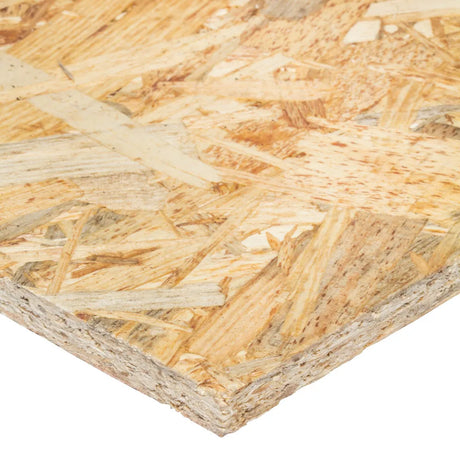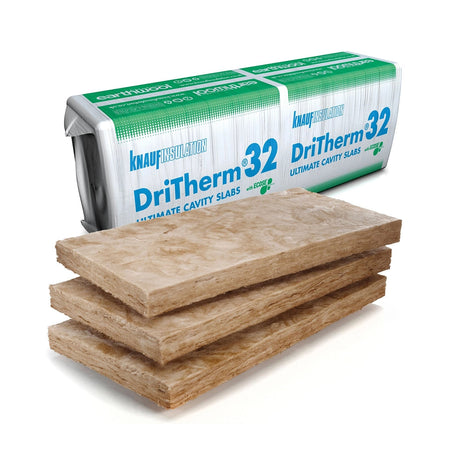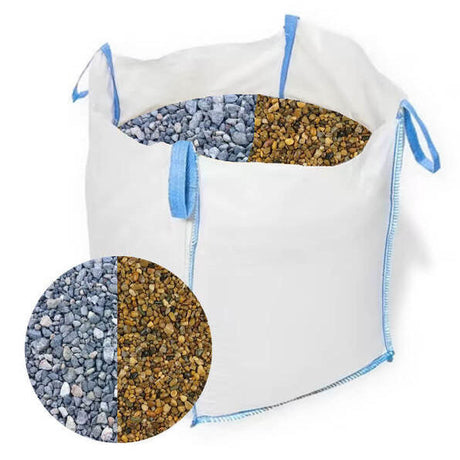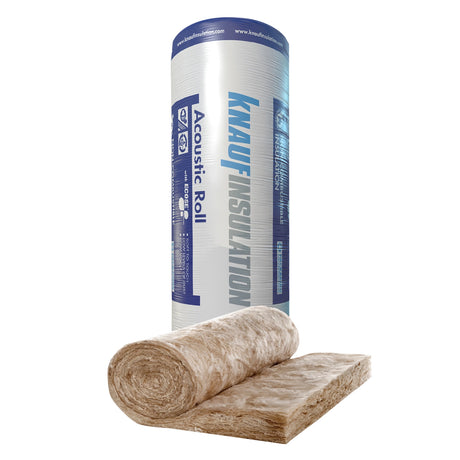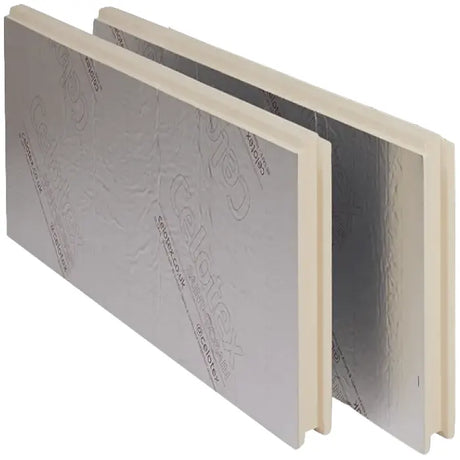The landscape of energy-efficient building materials has transformed dramatically in recent years, driven by evolving regulations, technological advancement, and growing environmental awareness. Today's materials deliver unprecedented performance levels whilst becoming increasingly accessible to DIY enthusiasts and trade professionals seeking genuine energy savings and enhanced comfort.
At DIY Building Supplies, we've witnessed this evolution firsthand, helping customers navigate the expanding range of high-performance materials that deliver measurable energy improvements. The key lies in understanding which innovations offer genuine value whilst ensuring compatibility with existing building fabric and realistic installation requirements for typical UK properties.
Modern energy-efficiency upgrades needn't involve complete renovations or specialist installation teams. Strategic use of advanced materials, combined with proven techniques, creates substantial improvements in building performance whilst remaining within practical DIY capabilities and reasonable budgets.
Advanced Insulation Technologies
Contemporary insulation materials represent significant advances over traditional options, delivering superior thermal performance within reduced thicknesses whilst addressing installation challenges that previously limited DIY applications. Understanding these innovations helps optimise energy improvements whilst maintaining practical installation requirements.
Vacuum insulated panels (VIPs) offer remarkable thermal performance, achieving U-values as low as 0.007 W/m²K within minimal thickness. Whilst traditionally expensive and fragile, recent developments have created more robust versions suitable for DIY installation. These panels prove particularly valuable in space-constrained applications where conventional insulation thickness would compromise room dimensions or architectural features.
Aerogel-enhanced insulation combines the convenience of traditional materials with revolutionary thermal performance. Products from manufacturers like Knauf incorporate aerogel particles within familiar formats, achieving thermal conductivity values around 0.014 W/m²K whilst maintaining easy handling characteristics. These materials offer particular value in renovation projects where superior performance within limited space provides essential advantages.
Multifoil reflective insulation systems have evolved significantly, with modern products achieving impressive performance through sophisticated layer combinations. Quality systems now achieve equivalent performance to 200mm mineral wool within 50mm thickness, making them invaluable for applications where conventional insulation proves impractical. Proper installation techniques ensure optimal performance whilst avoiding condensation risks that compromise effectiveness.
Phase change material (PCM) insulation represents another significant innovation, storing and releasing thermal energy to regulate temperature fluctuations naturally. These materials prove particularly effective in climates experiencing significant diurnal temperature variation, reducing heating and cooling demands whilst enhancing comfort levels throughout buildings.
Revolutionary Wall Insulation Solutions
External wall insulation has undergone substantial development, with modern systems delivering exceptional performance whilst addressing traditional concerns about appearance, durability, and building fabric compatibility. Understanding these advances helps identify opportunities for dramatic energy improvements within existing properties.
Thin-coat external insulation systems now achieve outstanding thermal performance using advanced materials that minimise visual impact whilst providing comprehensive thermal envelope upgrades. Modern EPS and mineral wool systems from established manufacturers achieve U-values below 0.20 W/m²K whilst maintaining familiar installation procedures accessible to competent DIYers.
Internal wall insulation innovations address moisture management challenges that previously limited performance and durability. Modern systems incorporate sophisticated vapour control strategies alongside high-performance insulation, creating solutions that eliminate condensation risks whilst delivering substantial thermal improvements. Products designed specifically for solid wall properties ensure compatibility whilst maximising energy savings.
Cavity wall insulation has advanced beyond simple blown materials to include sophisticated systems that address thermal bridging whilst ensuring long-term performance. Modern injection systems achieve complete cavity filling whilst maintaining excellent thermal properties throughout anticipated service life, providing cost-effective energy improvements for millions of UK properties.
Hybrid insulation systems combine multiple technologies to optimise performance across varying conditions. These sophisticated solutions adapt their thermal properties according to environmental conditions, providing enhanced performance whilst maintaining simple installation procedures suitable for DIY implementation.
Next-Generation Glazing Systems
Window technology continues advancing rapidly, with modern systems delivering thermal performance that rivals insulated walls whilst maintaining transparency and aesthetic appeal. Understanding these developments helps identify upgrade opportunities that provide substantial energy savings alongside enhanced comfort.
Triple glazing has become increasingly accessible, with manufacturing improvements reducing costs whilst enhancing performance characteristics. Modern systems achieve U-values around 0.8 W/m²K whilst incorporating advanced coatings that optimise solar gain characteristics according to orientation and climate requirements. Quality frames from established manufacturers ensure longevity whilst maintaining excellent thermal performance.
Dynamic glazing technologies offer adaptive performance that responds to environmental conditions automatically. Electrochromic and thermochromic glazing systems adjust their thermal and optical properties according to external conditions, optimising energy performance whilst maintaining occupant comfort throughout varying conditions.
Vacuum glazing represents the ultimate glazing technology, achieving exceptional thermal performance within standard glazing thicknesses. These systems deliver U-values comparable to insulated walls whilst maintaining conventional appearance and installation requirements, making them ideal for heritage properties where conventional multiple glazing proves inappropriate.
Secondary glazing innovations provide retrofit solutions that dramatically improve existing window performance without replacement requirements. Modern systems achieve thermal improvements approaching new triple glazing whilst remaining reversible and suitable for protected buildings where external alterations face restrictions.
Smart Building Integration Materials
Contemporary energy-efficiency upgrades increasingly incorporate intelligent systems that optimise performance automatically whilst providing enhanced user control over building environmental conditions. Understanding these technologies helps create integrated solutions that maximise energy savings whilst improving occupant comfort.
Smart insulation systems incorporate sensors and control mechanisms that adjust thermal properties according to environmental conditions and occupancy patterns. These sophisticated materials optimise energy performance automatically whilst providing real-time feedback about building thermal performance and potential improvement opportunities.
Integrated photovoltaic materials seamlessly combine renewable energy generation with conventional building elements, creating solutions that generate electricity whilst providing weather protection and aesthetic enhancement. Modern building-integrated PV systems achieve impressive energy generation whilst maintaining familiar installation procedures accessible to experienced DIYers.
Thermal mass enhancement materials store and release energy to regulate temperature fluctuations naturally whilst reducing mechanical heating and cooling demands. Phase change materials incorporated within conventional building elements provide substantial thermal regulation whilst remaining invisible within finished constructions.
Advanced Air Sealing Technologies
Air leakage represents a major energy loss mechanism that modern materials address through sophisticated sealing systems providing long-term performance whilst maintaining building flexibility. Understanding these innovations helps achieve comprehensive air tightness without compromising building durability or occupant comfort.
Intelligent vapour barriers adapt their permeability according to environmental conditions, preventing moisture problems whilst maintaining optimal air sealing performance throughout varying seasonal conditions. These materials eliminate traditional conflicts between air sealing and moisture management whilst providing superior long-term performance.
Expanding foam technologies have advanced significantly, with modern products providing controlled expansion alongside superior adhesion and longevity characteristics. These materials seal complex geometries effectively whilst maintaining flexibility that accommodates natural building movement without compromising air sealing performance.
Tape and membrane systems achieve professional air sealing standards whilst remaining accessible to DIY installers. Quality products from specialist manufacturers provide reliable performance whilst incorporating features that simplify installation and ensure consistent results across varying application conditions.
Implementation Strategies for Maximum Impact
Successful energy-efficiency upgrades require systematic approaches that prioritise improvements according to cost-effectiveness whilst ensuring compatibility between different systems and materials. Understanding these strategies helps optimise investment whilst avoiding conflicts that compromise performance.
Fabric-first approaches prioritise building envelope improvements before considering mechanical systems, creating foundations for enhanced performance whilst reducing ongoing energy demands. This methodology ensures optimal value from efficiency investments whilst providing immediate comfort improvements that justify upgrade costs.
Integrated upgrade planning coordinates multiple improvements to achieve synergistic benefits whilst minimising disruption and installation costs. Combining insulation upgrades with glazing improvements and air sealing creates comprehensive solutions that deliver exceptional performance whilst maintaining practical installation sequences.
Future-Proofing Your Investment
At DIY Building Supplies, we understand that energy-efficiency upgrades represent significant investments requiring careful material selection and proven installation techniques. Our comprehensive range includes the latest high-performance materials from leading manufacturers like Celotex, Knauf, and Kingspan, ensuring access to technologies that deliver measurable energy savings.
Our technical team provides detailed guidance throughout upgrade projects, helping optimise material selection whilst ensuring installation techniques achieve manufacturer-specified performance levels. Whether planning comprehensive retrofit projects or targeting specific improvement opportunities, we can recommend materials and methods that deliver exceptional value whilst remaining within practical DIY capabilities.
Contact our experienced team to discuss your energy-efficiency requirements. With advanced materials that push performance boundaries alongside proven installation techniques, creating dramatically more efficient buildings becomes both achievable and cost-effective for modern property improvement projects.



